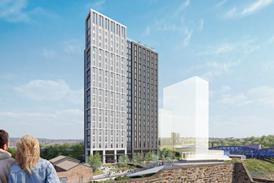Hackitt looks to crack down on building safety shortcuts
Architects of blocks of flats will have to prove their designs are safe before work can start, Dame Judith Hackitt has said.
Principal designers will have to submit their plans to the new Joint Competent Authority (JCA) which will be set up in the wake of the review.
Hackitt’s review contains three key recommendations - dubbed gateway points. One is that the government should ensure thorough assessment by the JCA of detailed design plans for buildings over 10 storeys and sufficient assurance that dutyholders are in place and relevant responsibilities are being met in order to give permission for building work to legally commence.
In her final report, which was released this morning, Hackitt put the construction industry on notice, aiming to crack down on those who take “shortcuts” with building safety.
She recommended the introduction of three gateway points, where building professionals with a responsibility for safety will have to prove to the JCA that they are complying with regulations.
The JCA will be made up of the Local Authority Building Standards, fire and rescue authorities and the Health and Safety Executive.
Hackitt, speaking on BBC Radio 4’s Today programme ahead of the report’s release this morning, said: “My investigation has determined that there are people out there taking shortcuts, cutting costs and not taking responsibility for building buildings that are safe for people to live in.”
The new proposal lays out planning permission, full plans approval and the completion of construction as the three stages where the JCA will have to give any residential building more than 10 storeys high the seal of approval.
The report recommended: “A series of robust gateway points to strengthen regulatory oversight that will require dutyholders to show to the JCA that their plans are detailed and robust; that their understanding and management of building safety is appropriate; and that they can properly account for the safety of the completed building in order to gain permission to move onto the next phase of work and, in due course, allow their building to be occupied.”
Gateway Points
- Planning permission: Includes a statutory requirement for planning departments to consult with the JCA on fire safety
The LPA [local planning authority] should be required in law to undertake a consultation with the JCA where it identifies that a building is a HRRB [high-risk residential building]. This process should also apply where planning permission for another building in the near vicinity is sought (where such a building might impact on fire service access to a HRRB).
- Full Plans Approval: principal designer presents JCA with full plans for approval. Can’t start work without this
Government should ensure that there is thorough assessment by the JCA of detailed design plans for HRRBs and sufficient assurance that dutyholders are in place and relevant responsibilities are being met in order to give permission for building work to legally commence.
- Completion stage: Full details of building as built plus a fire risk assessment before occupation
a) the JCA undertakes a thorough test of the dutyholders’ as-built construction of HRRBs, supported by clear documentary evidence from the Principal Contractor that the design intent has been delivered as proposed (and any changes are documented and justifiable) and that handover of key golden thread information has occurred.
b) the building owner must have completed a pre-occupation Fire Risk Assessment and resident engagement strategy. All of this must be signed off by the JCA (and a safety case review cycle established)













10 Readers' comments